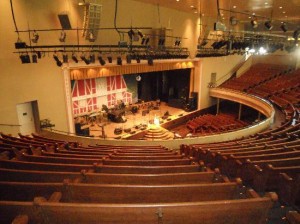 |
From Ghosts to Gokey, Nashville’s two main performance venues delight every onstage interest, says Scott Sohr. Today, Scott Sohr, Nashville-based real estate developer and the mind behind some of Williamson County’s most luxurious communities, talks about why his roots remain firmly planted in Music City. ZRYLW: Good morning, thank you for being here today. Scott Sohr: No problem, I’m always happy to talk about my hometown. |
ZRYLW: Let’s talk music. Nashville has it. Where can future Nashvillians find it?
Scott Sohr: All over really—a quick walk downtown will offer visitors a chance to sample the best of Nashville’s up-and-coming artists.
ZRYLW: What about big venues with big name headliners?
Scott Sohr: That’s easy: the Ryman and the Grand Ole Opry.
ZRYLW: What kinds of events could one expect stumble upon at these two gems?
Scott Sohr: The Opry has shows every week. Everyone from industry veterans Crystal Gayle and Collin Raye to American Idol icons like Danny Gokey have marched their boots across this star-making stage.
ZRYLW: And the Ryman?
Scott Sohr: The Ryman isn’t called the Mother Church of Country Music for nothing! Greats like Merle Haggard and Trace Adkins regularly play here.
ZRYLW: The Ryman doesn’t just host country music, right?
Scott Sohr: No, the venue is popular with bands and audiences of all genres. Comedian Daniel Tosh and alternative band Primus have both graced the stage of the Ryman.
ZRYLW: And stage performances?
Scott Sohr: Soon, the Ryman will host a theatrical performance of the Ghost Brothers of Darkland County. The venue has also played home to the Academy of Country Music Honors Ceremony.
ZRYLW: Back to the Opry, we understand it has a pretty interesting history?
Scott Sohr: It does, yes. The Opry started out as an old time barn dance back in 1925. The current venue derives is moniker from a passing statement made on-air in 1927. That night, program director Judge Hay made the play on words following a musical selection of classical music from the Grand Opera.
ZRYLW: And thus was born the Opry.
Scott Sohr: That unintentional rebranding is perhaps the greatest accident in country music’s history.
ZRYLW: Agreed. What about the Ryman—how did it become a Nashville attraction?
Scott Sohr: Well, that’s an interesting story too. The “Mother Church” was actually a place of worship in the beginning. The Union Gospel Tabernacle was built in 1892 by a repenting riverboat captain, Thomas Ryman.
ZRYLW: The Opry and the Ryman are connected, aren’t they?
Scott Sohr: Yes, actually, the Opry is the reason the Ryman became such an iconic structure. The building was once the home of the Opry for more than three decades.
ZRYLW: The Ryman is an official landmark for Nashville, right?
Scott Sohr: Yes, it was labeled a National Historic Landmark in 2001, 30 years after being listed on the National Register of Historic Places.
ZRYLW: That’s all the time we have for today. Thank you again for speaking with us, we hope our readers will take the time to visit your fair city.
Scott Sohr: We do love tourists, and I think they will find Nashville a hot spot for the entire family. I know I do and can’t imagine living anywhere else.